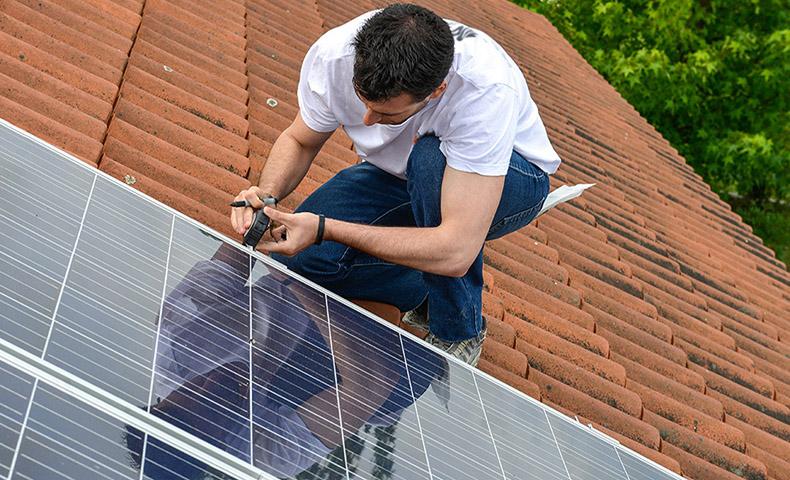Solar panels have become a popular and environmentally friendly way to generate electricity for homes and businesses. However, the installation of solar panels on your roof is not without its challenges. One of the key concerns is roof repair after solar panels are in place. In this article, we will explore the potential issues that can arise and the best practices for maintaining your roof’s integrity during and after solar panel installation.

Understanding the Impact
How Solar Panels Affect Your Roof
Solar panel installation involves mounting heavy equipment on your roof, which can impact its structural integrity and longevity. It’s essential to be aware of the potential consequences and steps to mitigate any damage.
Potential Issues After Solar Panel Installation
- Penetrations: Solar panels are attached to the roof using mounting brackets that require penetrations into the roofing material. These penetrations create openings through which water can potentially infiltrate, leading to leaks.
- Weight: Solar panels can add significant weight to your roof. While modern roofs are typically designed to handle this extra load, it’s crucial to ensure that your roof’s structure is capable of supporting the panels.
- Roof Material Damage: The installation process can cause physical damage to your roofing material, potentially resulting in cracks or breakage.
- Sealant Deterioration: The sealant used around mounting brackets and penetrations may degrade over time, leaving your roof vulnerable to water infiltration.
Preserving Your Roof’s Integrity
Best Practices for Roof Repair and Maintenance
To maintain the integrity of your roof after solar panel installation, consider the following best practices:
1. Inspection and Maintenance:
- Solution: Regularly inspect your roof, especially around the area where solar panels are installed. Look for signs of wear, damage, or deterioration. Consider professional maintenance at least once a year to ensure the roof is in optimal condition.
2. Proper Installation:
- Solution: Ensure that your solar panels are installed by a reputable and experienced professional. This minimizes the chances of errors during installation.
3. Quality Sealant:
- Solution: Use high-quality sealant materials to create a strong and long-lasting barrier around mounting brackets and penetrations.
4. Weight Capacity Assessment:
- Solution: Before installing solar panels, assess your roof’s weight-bearing capacity to confirm it can support the additional load.
5. Flashing and Waterproofing:
- Solution: Consider installing additional flashing and waterproofing measures around mounting brackets and penetrations to further protect against water infiltration.
6. Prompt Repairs:
- Solution: If you notice any issues such as leaks, cracks, or damage to your roofing material, address them promptly. Delaying repairs can lead to more significant problems.
Conclusion
The installation of solar panels on your roof can be a significant investment in both energy efficiency and environmental sustainability. However, it’s crucial to be aware of the potential impact on your roof’s integrity and take steps to preserve it. Regular inspections, proper installation, and high-quality sealant materials are all essential factors in ensuring that your roof remains in good condition after solar panel installation. By following these best practices, you can enjoy the benefits of solar energy without compromising the structural integrity of your roof.



Leave a Reply